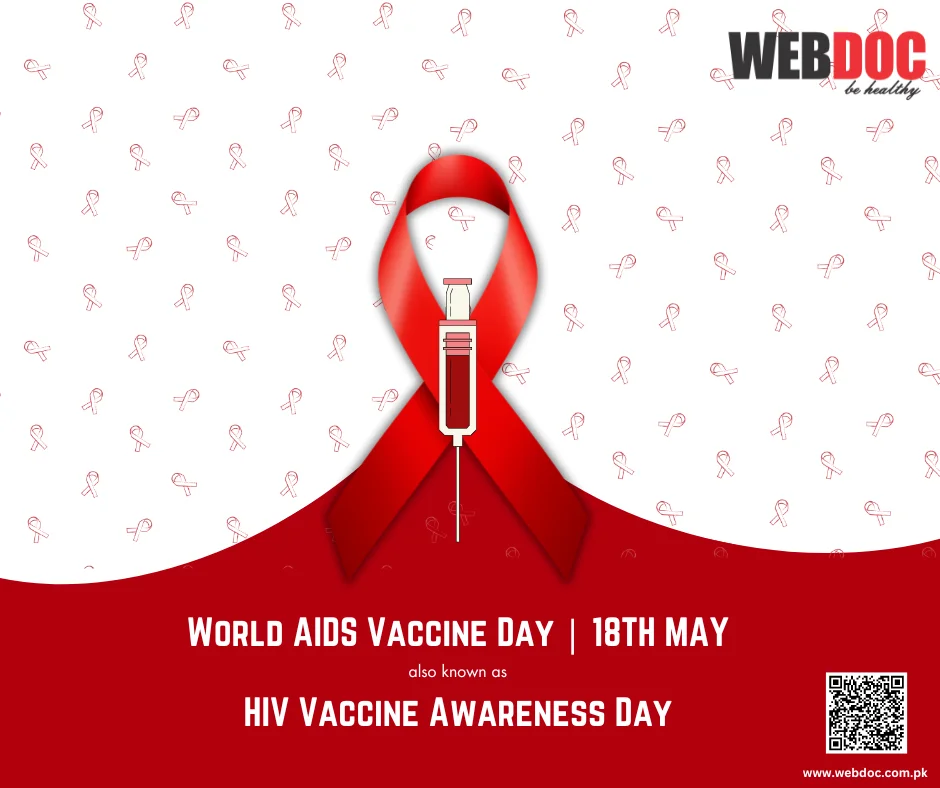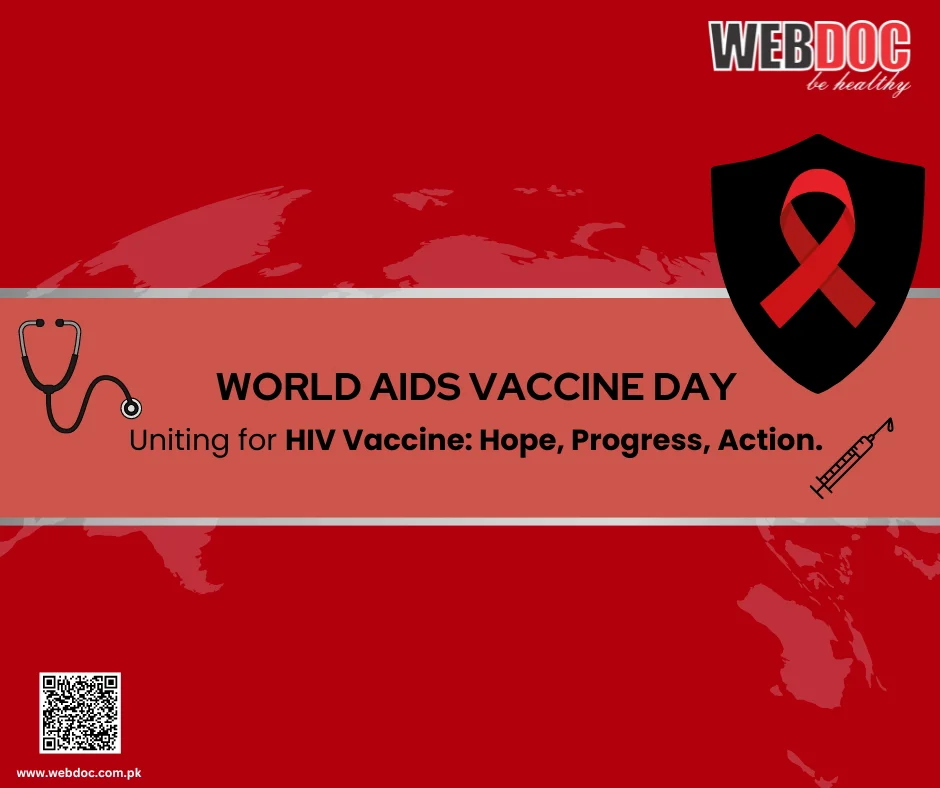A Step Towards Eradicating HIV/AIDS
Introduction
World AIDS Vaccine Day, observed annually on May 18th, marks an important effort in the fight against HIV/AIDS. It is a day dedicated to raising awareness about the urgent need for a vaccine to prevent HIV infection and to honor the work of researchers, scientists, and volunteers involved in this endeavor. This day also serves as a reminder of the global commitment required to combat this epidemic and the significant strides still needed to achieve a world free from AIDS.
The Origins and Purpose of World AIDS Vaccine Day
World AIDS Vaccine Day, also known as HIV Vaccine Awareness Day, originated from a speech given by then U.S. President Bill Clinton on May 18, 1997. In his speech, President Clinton highlighted the importance of developing an HIV vaccine as a crucial part of the global strategy to end the AIDS epidemic. He called for a new national effort to develop an AIDS vaccine within the next decade, emphasizing the necessity of innovation, scientific research, and international cooperation.
The inaugural World AIDS Vaccine Day was observed a year later, on May 18, 1998, and it has since been recognized as a day to celebrate the progress in HIV vaccine research, acknowledge the challenges that remain, and renew commitments to finding a preventive vaccine. The day also honors the thousands of volunteers who participate in clinical trials, as their contributions are vital to advancing scientific knowledge and bringing a vaccine closer to reality.
The Global Impact of HIV/AIDS
HIV/AIDS remains one of the most serious health challenges facing the world today. Since the beginning of the epidemic, approximately 76 million people have been infected with HIV, and about 38 million people currently live with the virus. Despite significant advancements in treatment and prevention, HIV/AIDS continues to cause immense suffering and loss of life.
The impact of HIV/AIDS is particularly severe in sub-Saharan Africa, where nearly two-thirds of the global HIV population resides. In many of these countries, the epidemic has strained healthcare systems, devastated communities, and hindered economic development. Moreover, marginalized groups, including men who have sex with men, sex workers, and people who inject drugs, often face heightened risk and limited access to prevention and treatment services due to stigma, discrimination, and legal barriers.
The Quest for an HIV Vaccine
Developing a vaccine for HIV has proven to be one of the most complex challenges in modern medical science. Unlike many other viruses, HIV mutates rapidly and can evade the immune system, making it difficult to create a vaccine that provides long-lasting protection. Additionally, HIV’s ability to integrate into the host’s genome and establish latent reservoirs complicates efforts to eliminate the virus.
Despite these challenges, there have been significant milestones in HIV vaccine research. Over the past few decades, scientists have gained a deeper understanding of the virus’s structure, its modes of transmission, and the immune responses it elicits. These insights have paved the way for innovative approaches to vaccine development, including the use of viral vectors, recombinant proteins, and nucleic acid-based vaccines.
Major Milestones in HIV Vaccine Research
The RV144 Trial:
One of the most notable milestones in HIV vaccine research was the RV144 trial conducted in Thailand. This trial, which began in 2003, tested a combination of two vaccines: ALVAC-HIV (a viral vector vaccine) and AIDSVAX (a protein subunit vaccine). The results, published in 2009, showed a modest but significant reduction in HIV infection risk (31.2%) among vaccine recipients compared to those who received a placebo. While the level of protection was not sufficient for licensure, the trial provided valuable insights and generated optimism for future research.
HVTN 702:
Building on the RV144 findings, the HVTN 702 trial (also known as Uhambo) was launched in South Africa in 2016. This trial aimed to test an improved version of the RV144 vaccine regimen with additional booster shots to enhance durability and efficacy. Unfortunately, the trial was halted in 2020 after an interim analysis showed that the vaccine did not provide sufficient protection against HIV infection. Despite this setback, the trial contributed to a deeper understanding of the immune responses needed for effective vaccination.
Antibody-Based Approaches:
Researchers have also explored the potential of broadly neutralizing antibodies (bNAbs) to prevent HIV infection. These antibodies can target multiple strains of HIV and neutralize the virus. Studies have shown that infusing bNAbs into individuals at high risk of HIV exposure can reduce the likelihood of infection. Efforts are underway to develop vaccines that elicit similar antibody responses, which could provide a more durable and practical solution for widespread use.
Challenges and Future Directions
The journey towards an HIV vaccine is fraught with scientific, logistical, and financial challenges. The high variability of the virus, coupled with the need for a vaccine that is effective across diverse populations and geographic regions, complicates the development process. Additionally, large-scale clinical trials are costly and require significant investments from both the public and private sectors.
Nevertheless, the scientific community remains steadfast in its pursuit of an HIV vaccine. New technologies, such as mRNA vaccines (popularized by the COVID-19 pandemic), offer promising avenues for rapid and precise vaccine development. The success of mRNA vaccines in eliciting strong immune responses against COVID-19 has spurred renewed interest in applying this technology to HIV.
Moreover, the global health community recognizes the importance of a comprehensive approach to ending the AIDS epidemic. This includes not only the development of a vaccine but also the continued expansion of antiretroviral therapy (ART) coverage, the promotion of preventive measures such as pre-exposure prophylaxis (PrEP), and efforts to address the social determinants of health that exacerbate the impact of HIV/AIDS.
The Role of Community Engagement
Community engagement is a cornerstone of HIV vaccine research. Effective community participation ensures that research is conducted ethically, with respect for the rights and needs of those most affected by the epidemic. Engaging communities in the research process fosters trust, improves recruitment and retention in clinical trials, and ensures that the perspectives of diverse populations are considered.
Organizations such as the HIV Vaccine Trials Network (HVTN) and the International AIDS Vaccine Initiative (IAVI) work closely with communities around the world to promote awareness, education, and advocacy. These organizations facilitate dialogue between researchers and community members, ensuring that the goals and progress of vaccine research are transparent and inclusive.
The Human Element: Volunteers and Researchers
Behind the scientific advancements are the dedicated individuals who drive the progress in HIV vaccine research. Volunteers who participate in clinical trials play a crucial role in advancing scientific knowledge and bringing potential vaccines closer to reality. Their willingness to contribute to the greater good, often at personal risk, exemplifies the spirit of altruism and solidarity in the fight against HIV/AIDS.
Researchers, too, are at the forefront of this effort. Their tireless work in laboratories, clinical settings, and field sites worldwide underscores the complexity and urgency of developing an HIV vaccine. These scientists face numerous obstacles, from the technical challenges of vaccine design to the logistical difficulties of conducting large-scale trials. Despite these hurdles, their commitment to innovation and excellence continues to drive progress.
International Collaboration and Funding
The quest for an HIV vaccine is a global endeavor that requires international collaboration and substantial funding. Governments, non-governmental organizations, private sector partners, and philanthropic foundations all play a vital role in supporting research efforts. The collaboration between entities such as the National Institutes of Health (NIH), the World Health Organization (WHO), and the Joint United Nations Programme on HIV/AIDS (UNAIDS) exemplifies the coordinated approach needed to address this global health challenge.
Funding for HIV vaccine research is crucial to sustaining momentum and ensuring that promising candidates can progress through the necessary stages of development. Public-private partnerships, such as the collaboration between the Bill & Melinda Gates Foundation and pharmaceutical companies, have been instrumental in providing the resources needed to advance vaccine research and development.
The Vision for the Future
While significant challenges remain, the vision of a world where HIV is no longer a threat to global health is within reach. The development of an effective HIV vaccine would be a monumental achievement, complementing existing prevention and treatment strategies and bringing us closer to ending the AIDS epidemic.
Achieving this vision requires sustained commitment and investment from all sectors of society. It necessitates continued innovation in vaccine research, robust support for affected communities, and unwavering advocacy for policies that promote equity and access to healthcare. Importantly, it demands a global solidarity that transcends borders, recognizing that the fight against HIV/AIDS is a shared responsibility.
Conclusion
World AIDS Vaccine Day is a powerful reminder of the progress made and the challenges that lie ahead in the quest for an HIV vaccine. It is a day to honor the resilience and dedication of researchers, volunteers, and advocates who tirelessly work towards a common goal: a world free from HIV/AIDS. As we reflect on the advancements achieved thus far, we must also renew our commitment to supporting the research, advocacy, and collaboration needed to realize the dream of an HIV-free future.
Through continued innovation, community engagement, and international cooperation, we can overcome the obstacles that stand in our way and ultimately develop a vaccine that will end the HIV/AIDS epidemic. World AIDS Vaccine Day is not just a day of awareness; it is a call to action—a call to unite in the fight against HIV/AIDS and to envision a brighter, healthier future for all.




Leave A Comment